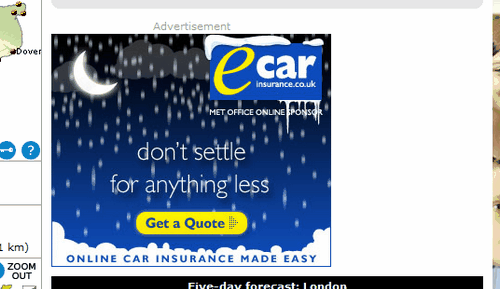A parliamentary question has revealed that, in the year to the end of January 2010, the Department of Health spent £2.72 million on Google Adwords pay-per-click keyword advertising. A big number, but a fair one?
With Google’s Adwords advertising, you only pay on results. An advert is displayed at the top, or down the side of a set of Google search results for a given keyword or phrase; or, optionally, on third-party web pages where Google’s matching technology decides your keyword is relevant. Plus, Google’s technology allows for geo-targeting, so in the case of DH, they can specify ‘UK only’. (Of course, DH is only responsible for England, but that’s for another day.) So in theory at least – we know that people were looking for something health-related; they saw an advert from DH/the NHS; they decided it was of interest; they clicked on it, and were taken to a DH website. Job done.
A couple of factors to bear in mind. There has been a trend towards campaign calls-to-action based on search terms: ‘search online for X’ – and in the free-for-all of Google search ranking, the only way to truly guarantee visibility at the top of the page is to pay Google for the privilege. If it works as a call-to-action, and you have to pay for it, then so be it. And it’s a competitive business – where government finds itself going head-to-head against pharmaceutical companies. Top ranking can cost a lot of money.
DH is rightly cautious about disclosing too much data, citing competitive confidentiality. Similarly, Google doesn’t tell you as much as you might like about ‘what keyword X will cost you’. But their Traffic Estimator provides some clues.
If we look at ‘chlamydia’ for example: Google’s tool suggests that a bid of 30-43p per click will buy you a position in the top 3 adverts for the term, leading to 62-86 clicks per day. That’s something like £27.50 per day, or £10,000 a year. Now of course, Google’s screen layout means there’s a significant premium to being the no1 ‘sponsored link’ – and you might well consider it worth bidding high to guarantee top spot, particularly in the case of chlamydia, where the NHS site is the no2 ‘natural’ result.
For the term ‘stop smoking’, Google’s tool suggests a bid of £1.66 to £2.50 per click, to secure a top 3 slot resulting in 49-68 clicks per day. So for a similar volume of traffic, that’d be well over £100 per day – and an annual cost in the region of £42,500. Why so much more expensive? – because the NHS is in direct competition with bids from anti-smoking drugs, devices and consultants. One wonders what premium they’re paying to guarantee no1 position there – but the Google tool suggests a maximum bid-per-click of over £6, taking us well into six figure annual budgets.
Time and again, when you search for something health-related on Google, there’s an NHS sponsored link at the top of the page. They, or rather we, are paying good money for this. You’ve got to assume someone’s looking at the numbers, and deciding it’s worthwhile. Just because it’s a big number, doesn’t necessarily mean it isn’t cost-effective. It may surprise some people for me to say this – but some things on the web are worth paying for.

